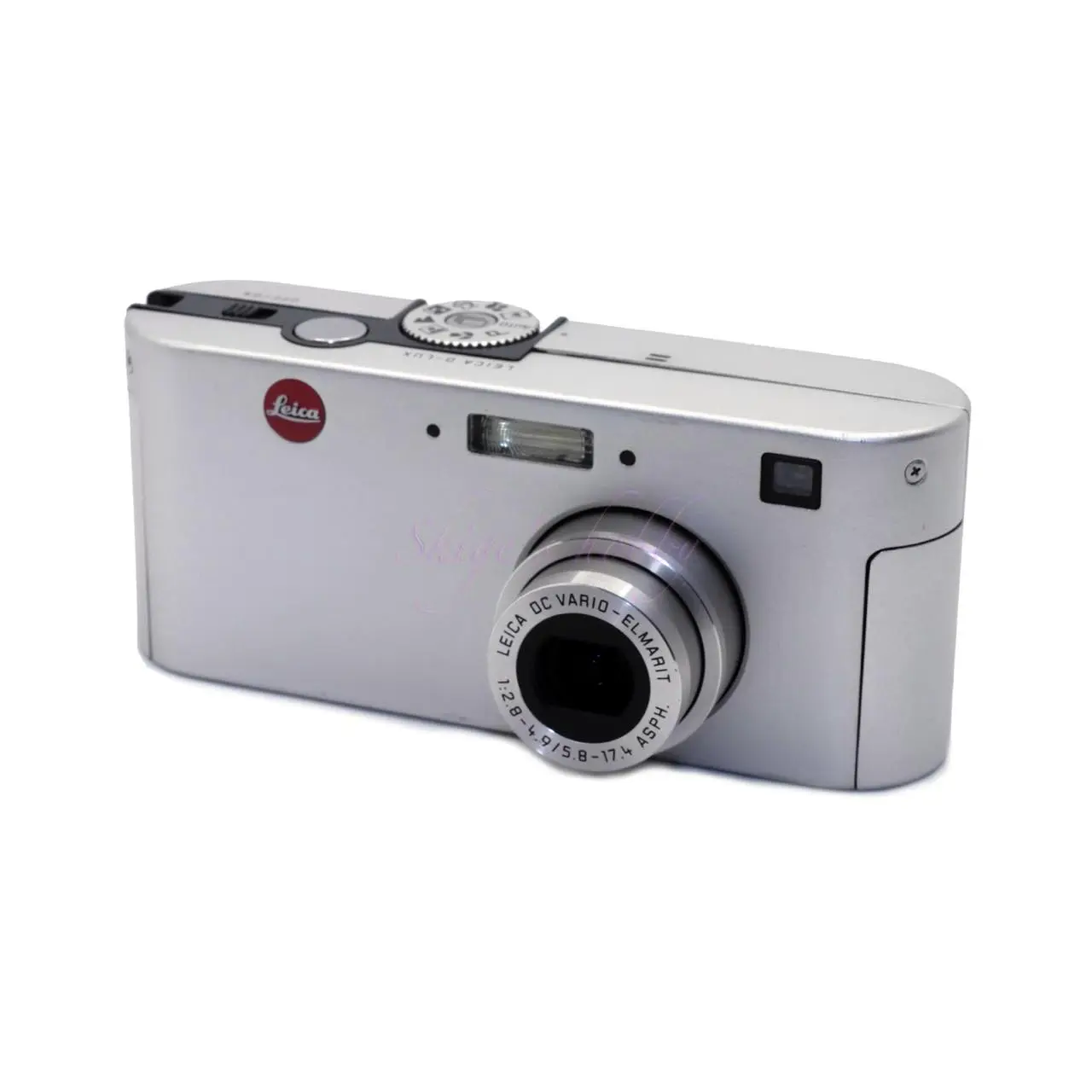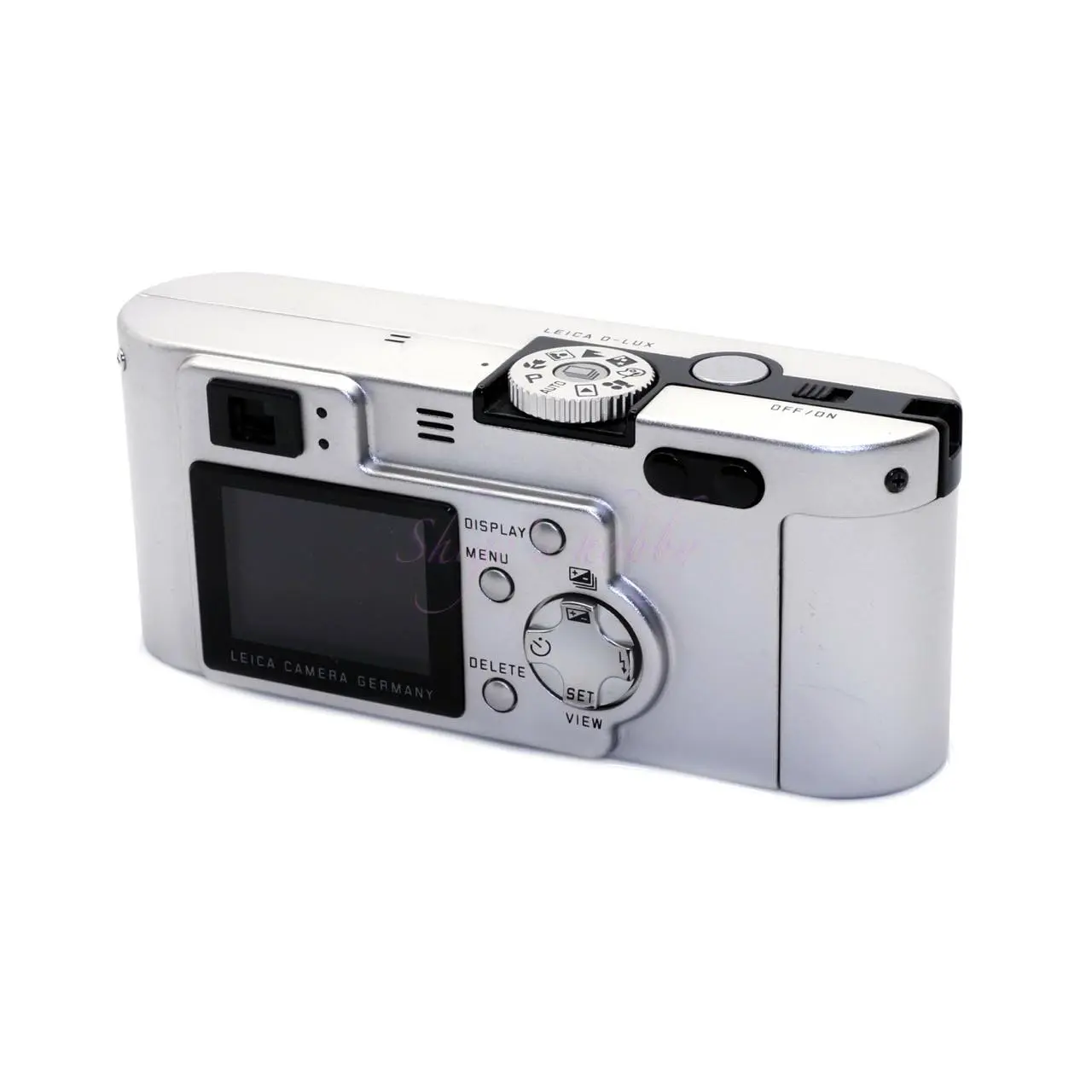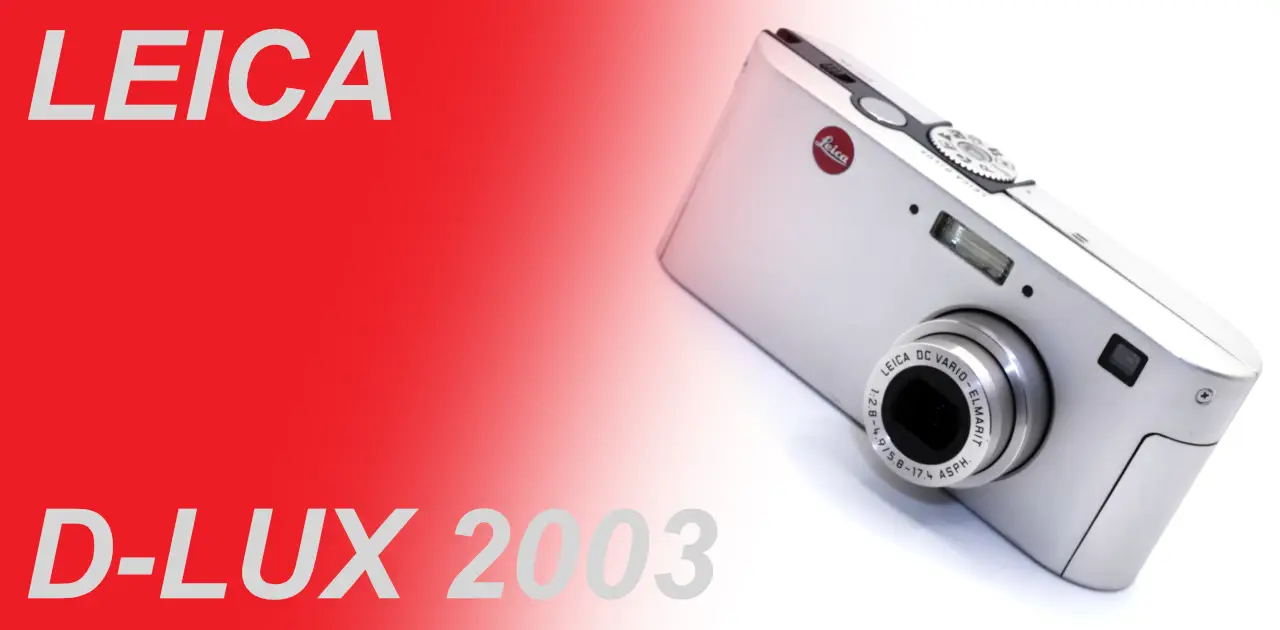Last updated on 2025-10-26
This article is a review and photo examples taken using the LEICA D-LUX compact digital camera, which was released in 2003 and has 3.2 megapixels, a 35-105mm zoom, and a 1.5-inch LCD screen.
- Please see the disclaimer regarding advertising here.
- Italicized links in the text are advertisement links that take you to other sites.
Table of contents
Gallery
Click on the image to enlarge
Review


1.Overview
The D-LUX (2003 version) is a compact digital camera released by Leica in 2003.
The main features are as follows:
- Lens: Leica DC VARIO-ELMARIT 1:2.8-4.9 /5.8-17.4 ASPH.
- Focal length: 35-105mm in 35mm equivalent
- Shooting distance: 30cm to infinity, with a macro mode that allows you to get as close as 10cm in front of the lens.
- Recording resolution: 2,048 x 1,536/1,600 x 1,200/1,280 x 960/640 x 480 pixels, recording format: JPEG, Raw recording is not possible.
- Can shoot 20 x 240 pixel video with sound, recording format: QuickTime.
Can use SD cards up to 2GB in capacity as recording media. Small capacity SD cards are still available as of 2025
The battery is BP-DC2-J, and the compatible battery is Panasonic’s DMW-BCA7. The battery is unique in shape and there are no other compatible batteries, so battery availability is extremely poor.
2.Usability
The D-LUX (2003 version) has a small 3.2 megapixel image sensor, so highlights are blown out if the exposure is not correct, noise appears when it’s a little dark, and it’s easy to blur in dark places, which makes me feel like it’s a small sensor digital camera from almost 20 years ago.
The shooting modes are simple, with AUTO, P, macro, portrait, distant view, and night view only on the dial on the top of the camera.
The cross button on the back has the timer, flash, and exposure compensation, making exposure compensation relatively easy, which is a nice touch for a compact digital camera.
The viewfinder is a real image zoom viewfinder, but it’s hard to tell where the focus is and the shooting range is not very clear, so it’s really just a guide. The rear LCD is small at 1.5 inches and has a low resolution of 110,000 pixels.
The exterior was designed by Leica, so the smooth design when viewed from the front still looks great. The one I have is a cheap second-hand item, so there are gaps in the body, screws are missing, and various other problems due to aging, but the electrical system is Panasonic, so it still works properly even after 19 years.
When using it, there is almost no waiting time from turning it on to starting shooting, and the startup time is comparable to that of modern compact digital cameras.
With a compact body that fits in one hand, quick startup, and the ability to take images that sometimes resemble negative film, it is a good camera to use casually, as you please, like a disposable camera.
The battery is an old model, so there are few compatible products available at present. The battery that came with the used camera had its exterior collapsed due to hydrolysis caused by aging of the exterior plastic, and the battery itself was swollen, so it was unusable. In 2022, I was able to purchase a compatible DMW-BCA7, so I bought two of them. Those compatible products also ran out of stock in 2024.
3.Summary
In conclusion, to sum up the D-LUX 2003ver, it is an old compact digital camera from over 20 years ago. In terms of camera performance, it has a wide-angle end of 35mm, low pixel count, and no image stabilization, which is almost nothing by modern standards. However, if you accept that, it may have the advantage of allowing you to concentrate on shooting.
Specifications, considerations, etc.
Starting with this camera, Leica changed its OEM supplier for compact digital cameras from Fujifilm to Panasonic. Panasonic OEM cameras sold by Leica have changed little from the original shape over the years, and there is no difference between the Panasonic and LEICA versions of the C-LUX, except for the presence of the Leica red badge. Still, the LEICA version of the D-LUX series has a simple exterior with no irregularities in design compared to the Panasonic version, and is a product line that has been put more effort into than other compact models.
The prototype camera for this camera is Panasonic’s DMC-F1. As an aside, the singer Ayumi Hamasaki appeared in the commercial for the DMC-F1. The use of a popular singer of the time in an advertisement for a digital camera makes you feel the era.
Also, looking at the popularity of Fujifilm digital cameras in the 2020s, I would like to see a world line in which Fujifilm continued to be the OEM supplier for Leica digital cameras. If there had been Leica exterior versions of the F100, XQ and XF, they would likely have been popular.
| Item | Value | Note |
| Number of pixels (Megapixcel) | 3.2-Megapixels | |
| Lens | Leica DC VARIO-ELMARIT 1:2.8-4.9 /5.8-17.4 ASPH. | 7 elements in 6 groups (3 aspherical lenses) 35-105mm equivalent |
| Image Sensor | 1/2.5″ CCD sensor | 3.34 million total pixels, primary color filter |
| Viewfinder | Real Image Optical Viewfinder | Viewfinder only checks the frame, not the focus. |
| Back LCD Panel | 1.5″ TFT LCD | |
| Memory card | SD card | Supports up to 2GB |
| Battery-type | BP-DC2-J | DMW-BCA7 *1 |
| Camera size | W x H x D 121×34×52mm | |
| Weight(g) | 200 (Include battery) |
Model History
| Model name | D-LUX | D-LUX2 | D-LUX3 | D-LUX4 | D-LUX5 | D-LUX6 | D-LUX Typ109 | D-LUX7 |
| 35mm equivalent focal length | 35-105 | 28-112 | 28-112 | 24-60 | 24-90 | 24-90 | 24-57 | 24-75 |
| Number of pixels (Megapixcel) | 3.2 | 8.6 | 10.2 | 10.1 | 10.1 | 10.1 | 12.8 | 17 |
| Image Sensor Size | 1/2.5 | 1/1.65 | 1/1.65 | 1/1.63 | 1/1.63 | 1/1.63 | 4/3 | 4/3 |
| Viewfinder | OVF | none | none | none | EVF1 | EvF3 | Inner- EVF | Inner- EVF |
| Back LCD Panel | 1.5 | 2.5 | 2.8 | 3.0 | 3.0 | 3.0 | 3.0 | 3.0 |
| Battery-type | BP-DC6 | BP-DC4 | BP-DC4 | BP-DC4 | BP-DC10 | BP-DC10 | BP-DC15 | BP-DC15 |
| Memory card | SD | SDHC | SDHC | SDHC | SDXC | SDXC | SDXC | SDXC |
| Release date | 2003 | 2005 | 2006 | 2008 | 2010 | 2012 | 2014 | 2018 |
| Body color | Silver | Silver | Black Silver | Black Safari Titan | Black Titan | Black Y100 G-star RAW | Black Gray | Black Silver |
Option
- Leather Case
- Strap
Reference links
- D-LUX Product Introduction by Impress PC-watch (Japanese)
- DCM-F1 product introduction by Impress PC-Watch (in Japanese)
Update history
- 2025.7.24
- 2025.1.3
- 2024.03.06
- 2022.08.13
Affiliate links
- Please see the disclaimer regarding advertising here.
- Italicized links in the text are advertisement links that take you to other sites.



Be First to Comment